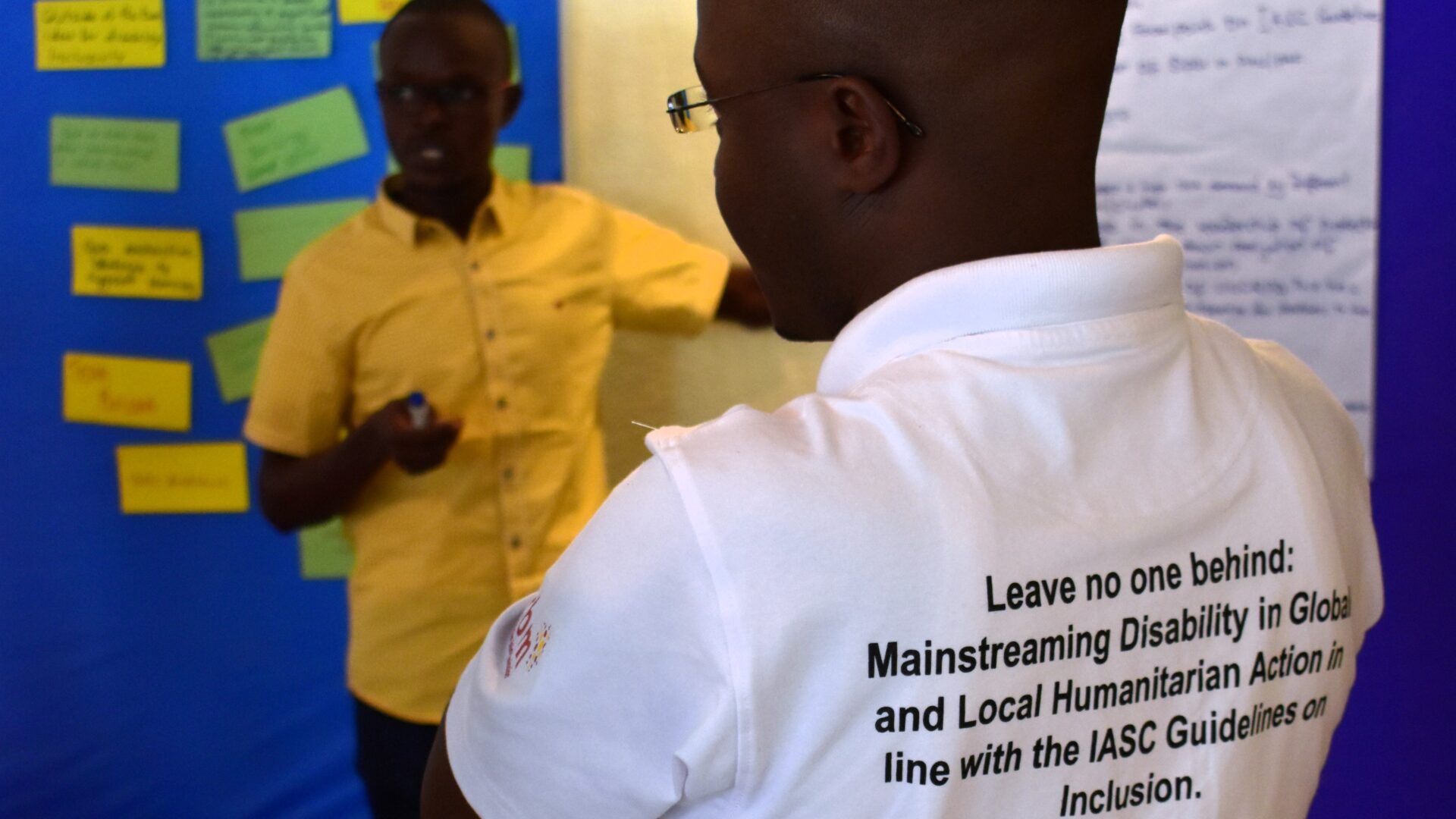Phase 3-LNOB Project: Our Achievements Toward Disability-Inclusive Humanitarian Action
Category
General IASC-Guidelines
© Heidi Villikka/ HI
The final evaluation of our Phase 3-Leave no one behind! -project confirms our significant contribution to advancing disability inclusion in humanitarian action across global and local levels. We are happy to share with you the highlights and achievements of the Phase 3 based on the external project evaluation.
The Phase 3 was implemented from 2022 to 2024 jointly by Handicap International e.V. / Humanity & Inclusion (HI), CBM Christoffel-Blindenmission Christian Blind Mission e.V. and the Institute for International Law of Peace and Armed Conflict (IFHV) at the Ruhr-University Bochum. The project was funded by the German Federal Foreign Office and focused on operationalizing the IASC Guidelines on the Inclusion of Persons with Disabilities in Humanitarian Action.
Operating globally and in six pilot countries— Somalia & Somaliland, South Sudan, Uganda, Cameroon, Niger and Nigeria —the project delivered substantial results in four interrelated areas:
- Capacity development: Training, technical support, guest lectures and learning materials for humanitarian actors, OPDs and students
- Tool adaptation: Adaptation of programming tools to advance disability-inclusion
- Localised technical support: Set-up and support localized technical support mechanisms and Disability-Working Groups
- Applied research & good practice collection: Increasing evidence and documentation of best practices
Key achievements of the project include:
- Over 400 humanitarian professionals from approximately 50 organisations trained in disability-inclusive humanitarian programming on global and regional level.
- 23 workshops and tools adaptation sessions were conducted across the six pilot countries and 78 tools adapted to be more disability inclusive, such as needs assessment and monitoring tools.
- 318 Disability Inclusion Focal Persons were trained.
- Development and application of the RAAL Lab (Review, Adapt, Action and Learning Laboratory) methodology, an innovative method used to strengthen the capacity of humanitarian actors to adapt their tools with input from over 200 participants across 40 organisations.
- Four field research conducted and ten case studies drafted, alongside the publication of one book and two additional volumes underway.
Evaluation findings highlight the project’s high relevance and effectiveness, with 86% of surveyed actors reporting changes to their programming to promote disability inclusion. Practical impacts included enhanced data collection, engagement with Organisations of Persons with Disabilities (OPDs), and improved monitoring processes.
Localised technical support mechanisms, such as Disability Inclusion Task Teams in Somalia and South Sudan and the Disability Working Group in Northeast Nigeria, emerged as promising practices. Additionally, strategic collaborations with partners such as the International Committee of the Red Cross (ICRC), World Food Programme (WFP), and the Disability Reference Group (DRG) strengthened inclusive competencies and practices.
Despite some implementation challenges, such as recruitment delays, staff turn-over, security deterioration and increasing pressure on the humanitarian system, the project remained efficient, on budget, and responsive to emerging needs. The evaluation recommends formalising partnerships with OPDs and further investing in external and internal dissemination of resources and materials produced. In addition, the evaluation suggests that the next phase of the project should continue advancing sectoral-specific materials and training and strengthening the localized technical support mechanism and disability inclusion in humanitarian coordination.
These essential recommendations have been already taken into account in the planning and implementation of the current “Phase 4 – Leave no one behind!”-project.
End Evaluation Results
Take a closer look at the results of “Phase 3 – Leave no one left behind!” end evaluation: